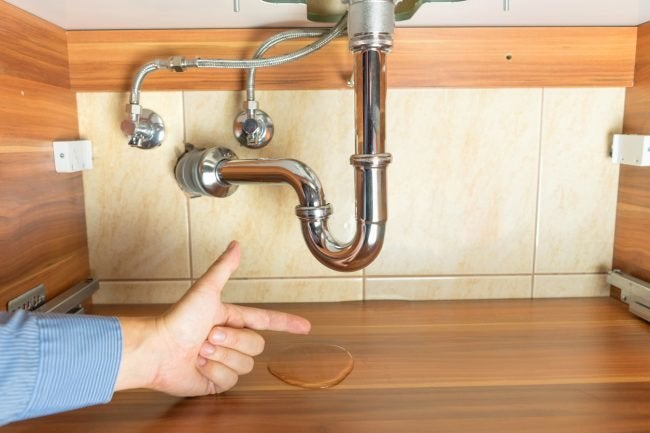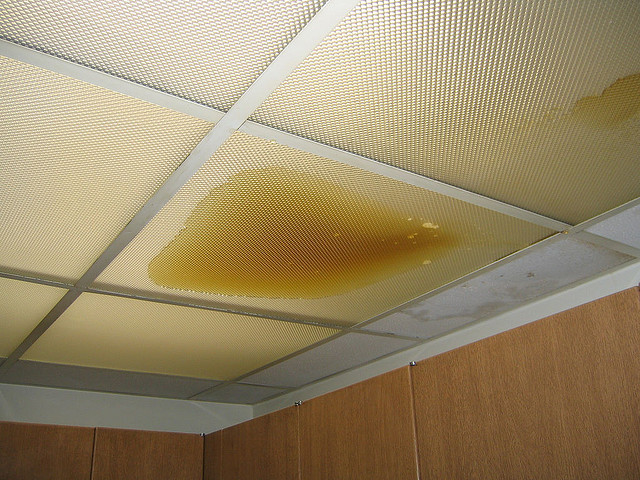Just how to Inspect If Your House Has a Covert Leak
Just how to Inspect If Your House Has a Covert Leak
Blog Article
In this article below you will find lots of really good insights relating to Finding hidden leaks.

Early detection of dripping water lines can alleviate a potential disaster. In addition to conserving you cash, it will decrease the stress and stress. The minute you locate a leak, calling your plumber for fixings is the most effective option. Some tiny water leaks may not be visible. If you can not detect it with your nude eyes, below are some hacks that aid.
1. Take A Look At the Water Meter
Inspecting it is a surefire method that helps you discover leaks. If it moves, that shows a fast-moving leakage. This indicates you might have a sluggish leak that can also be below ground.
2. Check Water Consumption
Assess your water costs as well as track your water usage. As the one paying it, you ought to discover if there are any disparities. If you identify sudden changes, in spite of your consumption being the same, it implies that you have leakages in your plumbing system. Remember, your water costs should drop under the very same array on a monthly basis. An abrupt spike in your expense shows a fast-moving leakage.
Meanwhile, a steady boost monthly, despite having the exact same habits, shows you have a sluggish leak that's likewise gradually intensifying. Call a plumber to thoroughly inspect your property, especially if you really feel a warm location on your floor with piping underneath.
3. Do a Food Coloring Examination
When it comes to water consumption, 30% comes from bathrooms. If the shade in some way infiltrates your bowl during that time without flushing, there's a leak between the storage tank and also dish.
4. Asses Outside Lines
Do not forget to inspect your outside water lines also. Test spigots by attaching a garden hose pipe. Must water permeate out of the link, you have a loosened rubber gasket. Change this and also make certain all connections are tight. If you've obtained a sprinkler system, it will help get it skillfully checked out and also kept annually. One tiny leak can waste tons of water and also increase your water costs.
5. Analyze the situation as well as evaluate
Homeowners should make it a practice to inspect under the sink counters as well as also inside cabinets for any bad odor or mold and mildew growth. These 2 warnings suggest a leak so prompt attention is required. Doing regular inspections, even bi-annually, can conserve you from a significant issue.
Much more importantly, if you know your home is already old, keep a watchful eye on your heating systems, pipes, pipes etc. Check for stainings as well as compromising as many appliances and pipes have a life span. They will certainly additionally naturally wear away as a result of tear and also use. If you suspect dripping water lines in your plumbing system, don't wait for it to rise. Call a professional plumber immediately so you do not wind up with a horrible mess in your house.
Early detection of dripping water lines can minimize a prospective calamity. Some small water leaks may not be noticeable. Checking it is a proven way that helps you find leakages. One little leak can waste tons of water and also spike your water expense.
If you presume dripping water lines in your plumbing system, do not wait for it to intensify.
How to Know If Your Home Has a Hidden Leak
Water Meter Reveals Inexplicable Water Usage
If you’d like to test whether or not there’s a leak somewhere in your home, you can do this using your water meter. Here is how to conduct the test:
Don’t use any water in your home for at least 30 minutes; this also means not turning on faucets or water-using appliances.
Go outside, and check your water meter for activity.
If your water meter shows that there was activity, even though no one was using any water, this proves that there is a leak in your home.Visible Mold or Mildew Growth
Leaks behind walls create moist, dark environments that allow mold and mildew to grow and thrive. Eventually, you might see mold growth forming on the wall closest to a hidden leak.
If mold is growing in an area that receives a high amount of moisture, such as a bathroom, it may simply be an indication that better ventilation is needed. However, if you see mold growth on a wall or the ceiling in an area where you would not expect, you probably have a hidden leak.
Musty, Mildew Odor
Sometimes you might not be able to see the mold or mildew that is growing as a result of a leak. However, the smell can give the problem away just as easily. If you catch a whiff of something musty, there’s a good chance that old water is collecting somewhere in your home that you can’t see.
Stained/Warped Walls, Ceilings, or Floors
When your home soaks up water, a variety of red flags can become visible, including ceiling stains, bubbling drywall, warped walls, and sagging floors. While these issues can be caused by excess humidity, they can also be signs that a pipe or plumbing connection has started leaking behind your walls.
Inexplicably High Water Bill
After a while, you get a general sense for what your water bill should be. If you own a pool or sprinkler system, your bill will tend to be higher during summer. However, if you receive a water bill that seems especially high, and you can’t figure out what caused it, then you may have a hidden leak somewhere that’s increasing your bill.
https://www.plumbingjoint.com/blog/2019/july/how-to-know-if-your-home-has-a-hidden-leak/

We were guided to that article about Finding hidden leaks through a good friend on another blog. Loved our write up? Please share it. Help others discover it. Many thanks for taking the time to read it.
Report this page